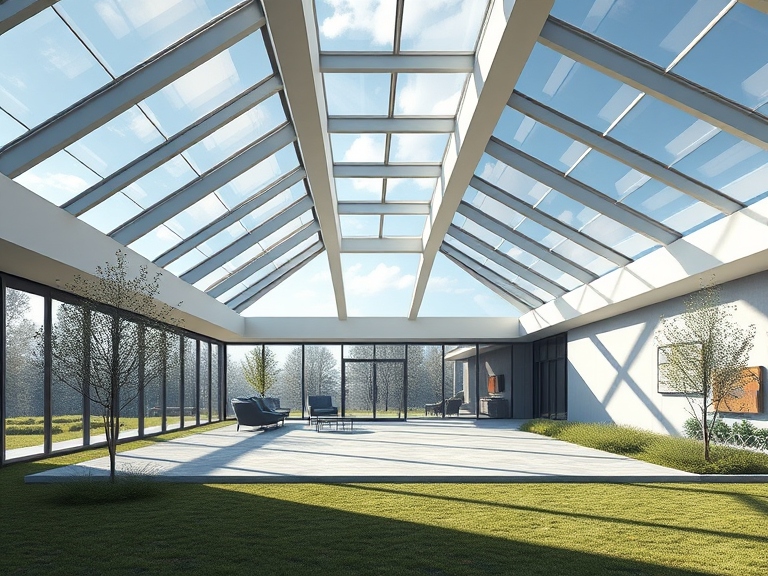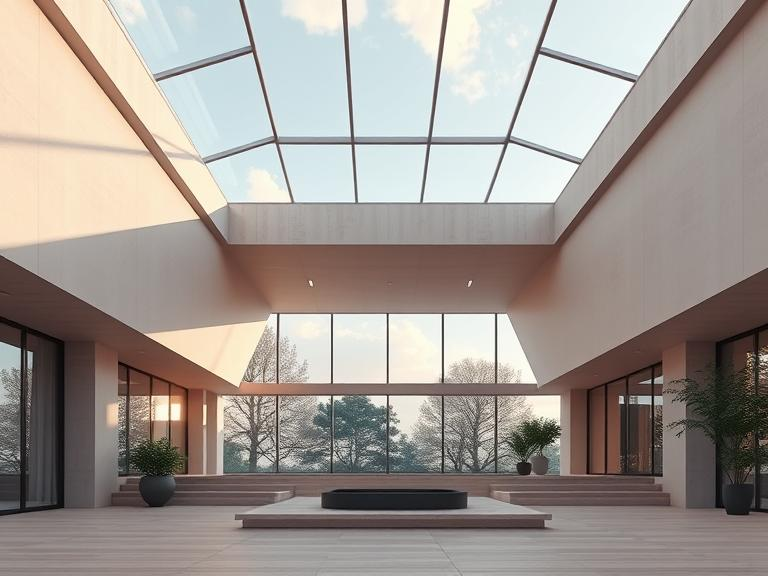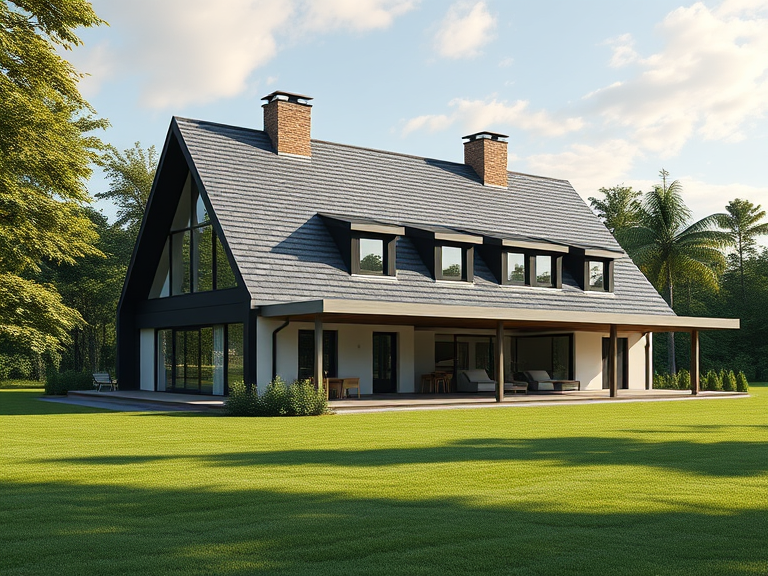
Skylights are an excellent way to introduce natural light into a home while enhancing its aesthetic appeal. Various types of skylights are available, each designed with specific features and intended benefits. The three primary types include fixed, vented, and tubular skylights. Fixed skylights, as the name suggests, remain stationary and are typically used to provide continuous natural light without any ventilation benefits. They are ideal for areas where airflow is not a priority. Vented skylights, on the other hand, come equipped with the ability to open, allowing for both light and ventilation. This feature makes them particularly suitable for bathrooms or kitchens, where moisture control is essential. Tubular skylights are compact and designed to bring daylight into smaller spaces using reflective tubing. They are especially useful in interior rooms that lack exterior walls.
Despite their benefits, skylights can encounter a range of common issues that may lead to the need for repairs. One of the most frequent problems is leakage, often resulting from compromised seals or damaged flashing. Leaks can stem from heavy rainfall, wind exposure, or improper installation, causing potential water damage to interior spaces. Condensation is another prevalent concern, particularly with fixed skylights. When warm air meets the cold surface of the glass, moisture may form, leading to drips and possible mold growth if not addressed. Furthermore, the flashing and seals around the skylight are critical components that protect against water infiltration. Over time, these areas can deteriorate due to prolonged exposure to the elements, necessitating repairs to restore optimal functionality.
In summary, understanding the different types of skylights and the common issues associated with them is crucial for homeowners. Identifying these specific problems enables effective planning for repairs, including learning how to do skylight repair to maintain the structural integrity and efficiency of these valuable installations.
Preparing for Skylight Repair: Tools and Safety Measures
When considering how to do skylight repair, it is imperative to assemble the right tools and materials before commencing the process. Essential tools include a utility knife, caulking gun, screwdriver set, and a pry bar. For sealants and flashing materials, a high-quality roofing sealant is essential for waterproofing, along with metal flashing to redirect water away from potential leak points. Having these tools readily available will streamline the repair process and help ensure a successful outcome.
Equally important is the use of proper safety gear. Wearing protective gloves and goggles can safeguard against sharp tools and potential debris that may be encountered during repairs. Additionally, a hard hat can be essential in preventing injuries from falling objects, particularly when working on roof installations. It is also advisable to wear slip-resistant footwear as a precaution against falls while navigating ladders and rooftops.
Ensuring a stable working environment is another critical aspect of safety during skylight repair. Before climbing a ladder, confirm that it is positioned on level ground, and consider using ladder stabilizers for added safety. Always have someone present to assist, as they can provide support and help manage tools and materials. Furthermore, assessing the condition of the skylight prior to beginning repairs can help prevent unexpected complications. Take the time to examine for signs of rot, mold, or other structural weaknesses that could affect your repair efforts. A thorough inspection will allow for a more targeted approach when determining necessary repairs and improvements.
By gathering the proper tools and adhering to safety measures, the task of how to do skylight repair can be approached with confidence and efficiency. Establishing a safe and organized working environment is critical, ensuring that the focus remains on the successful rehabilitation of your skylight.

Step-by-Step Guide to Common Skylight Repairs
Skylights are an excellent addition to any home, providing natural light and enhancing aesthetics. However, they can develop issues over time. Understanding how to do skylight repair can empower homeowners to handle common problems effectively. Below is a detailed guide on addressing typical skylight repairs, including resealing leaks, replacing damaged glass, and fixing flashing issues.
To begin, identify the source of the leak, which is often found around the edges of the skylight or through the framework. To reseal any leaks, start by removing the old caulk using a putty knife. Once the area is clear, clean it with a solution of water and mild detergent. Allow it to dry completely before applying a high-quality exterior-grade sealant. Apply the sealant evenly along the edge, ensuring to create a weather-tight seal. Smooth out the sealant with a wet finger for a neat finish. It’s crucial to allow the sealant to cure according to the manufacturer’s instructions before exposing it to water.
If you discover that the skylight glass is cracked or shattered, you will need to replace it. Carefully remove the damaged glass by unscrewing or prying off the frame. Measure the opening and purchase a matching glass pane, ensuring it is appropriate for skylight use. Following the manufacturer’s specifications, fit the new glass into place. Secure the frame and apply new sealing material around the edges to ensure integrity against weather elements. Adhering to proper techniques in handling glass will prevent injury.
Flashing issues often contribute to leaks, requiring attention as part of the repair process. Inspect the flashing around the skylight for signs of wear, rust, or damage. If replacement is needed, carefully remove the old flashing and install new flashing, overlapping the shingles to create an effective water barrier. For all repairs, if you find yourself uncertain or uncomfortable with a task, consulting with a professional can ensure a proper and permanent fix.
Maintenance Tips to Prevent Future Skylight Issues
Maintaining a skylight is crucial for ensuring its longevity and functionality. Regular inspections are vital to detect potential problems before they escalate into costly repairs. It is recommended to conduct a visual assessment of your skylight at least twice a year, ideally during spring and fall when weather patterns can affect performance. Look for signs of wear such as cracks or discoloration, as well as any water stains on the ceiling below, which may indicate leaks.
Cleaning is another essential maintenance task that homeowners should prioritize. Dirt and debris can accumulate around the skylight, hindering its ability to provide natural light effectively. Use a soft cloth and a mild cleaning solution to clean the glass panels. Avoid abrasive cleaners which can scratch the surface, compromising its integrity. Clearing leaves and other debris from drainage channels is also essential to prevent water pooling, which can lead to structural issues and leaks.
Proper drainage systems are critical in ensuring that rainwater flows away from the skylight. Regularly check the exterior flashing and ensure that it is securely sealed and free of obstruction. If you notice that water does not drain properly, consider installing a drainage system or adjusting existing elements to facilitate proper flow. This proactive approach minimizes the risks associated with water damage and leaks.
Timely maintenance not only extends the life of your skylight but also helps maintain energy efficiency in your home. An inefficient skylight can lead to increased energy costs due to loss of heated or cooled air. By following these maintenance tips and focusing on regular inspections and cleaning, homeowners can effectively safeguard their investment in skylight solutions and enjoy the natural sunlight that enhances their living space.



